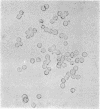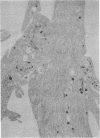Abstract
Mouse tumor C1300 has been established in tissue culture. The cells have a round cell morphology in both the subcutaneous tumor and in suspension culture. However, when given a surface on which to attach, they send out processes up to 3 mm in length and assume the morphology of mature neurons. The attached cells are stained by the Bodian silver procedure for neurons, whereas the cells grown in suspension are not. Electron microscopy reveals that the attached cells contain neurofilaments, neurotubules, and densecore vesicles indicative of nerve fibers. Both free-floating and attached cells have tyrosine hydroxylase activity characteristic of sympathetic nervous tissue. Apparently cell attachment can induce morphological differentiation from an anaplastic round cell to a cell which has many properties of a mature neuron.
Full text
PDF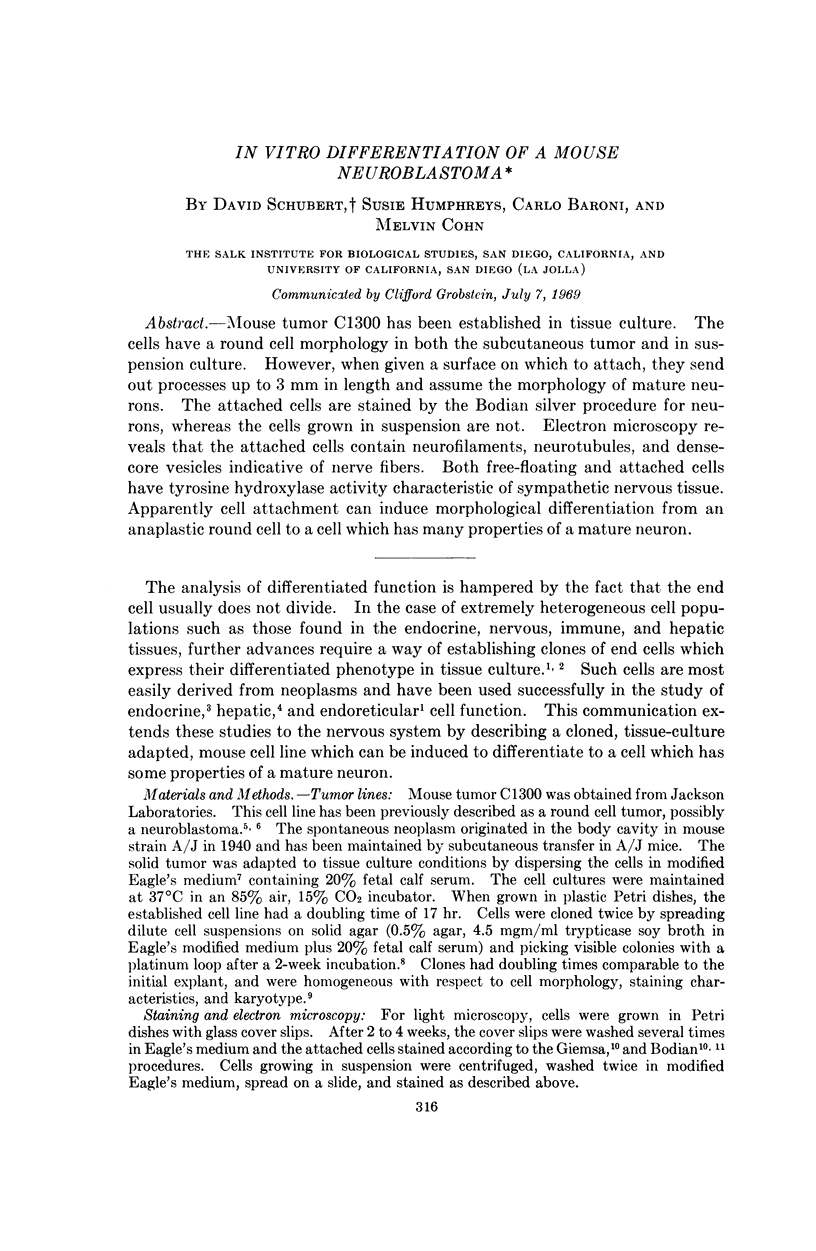
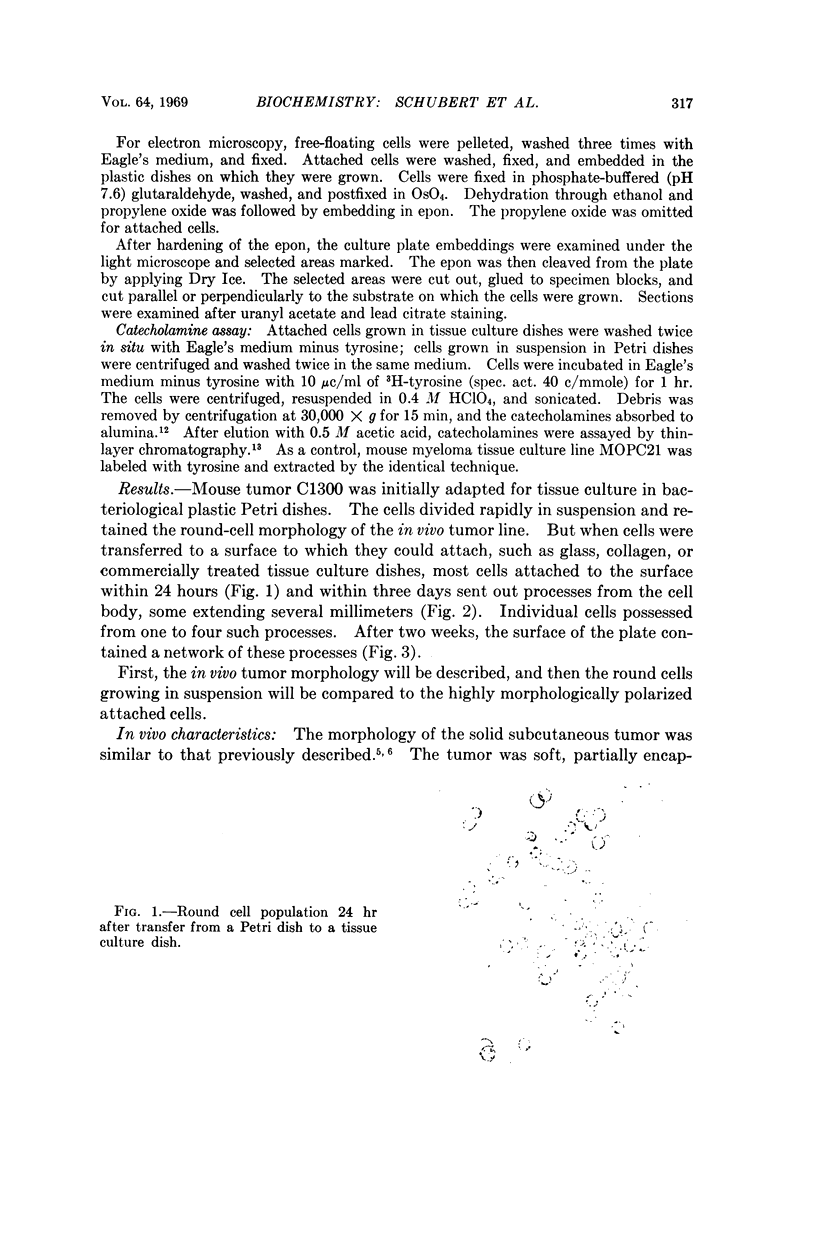
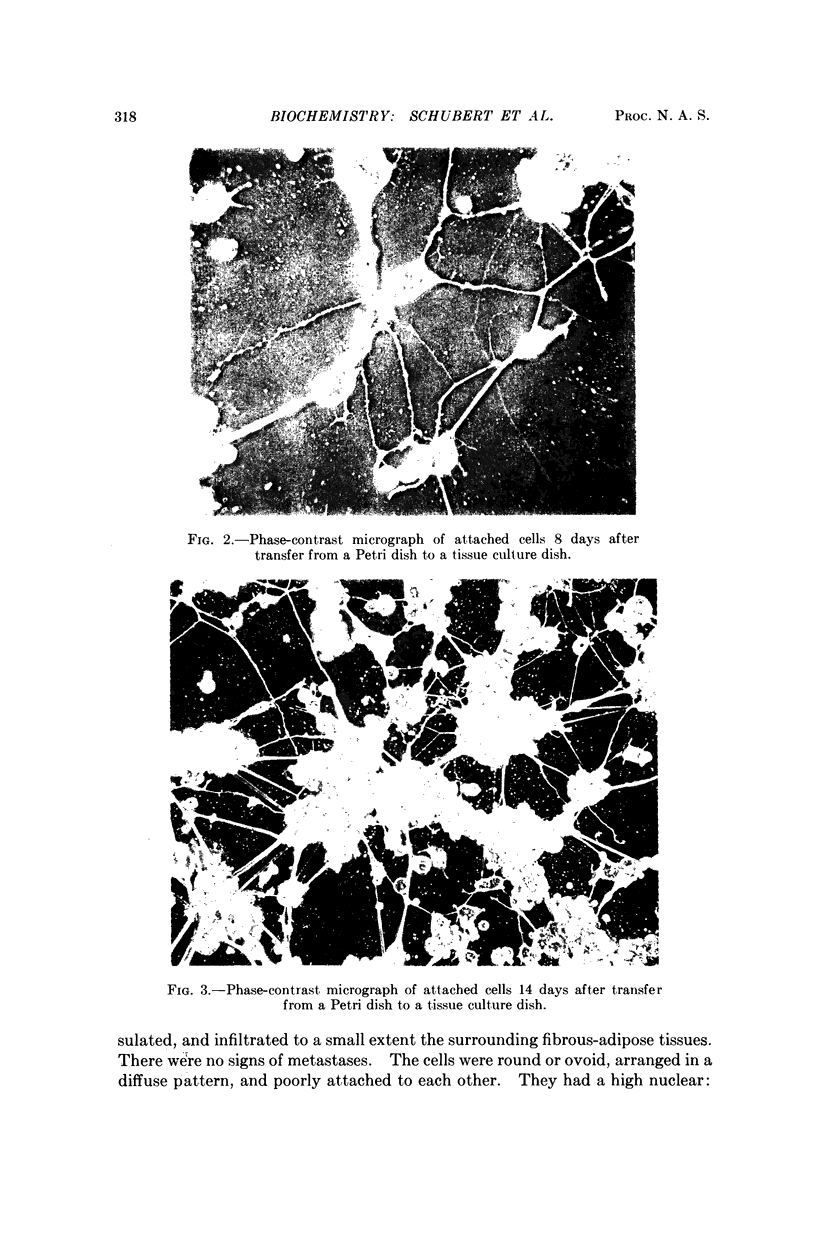
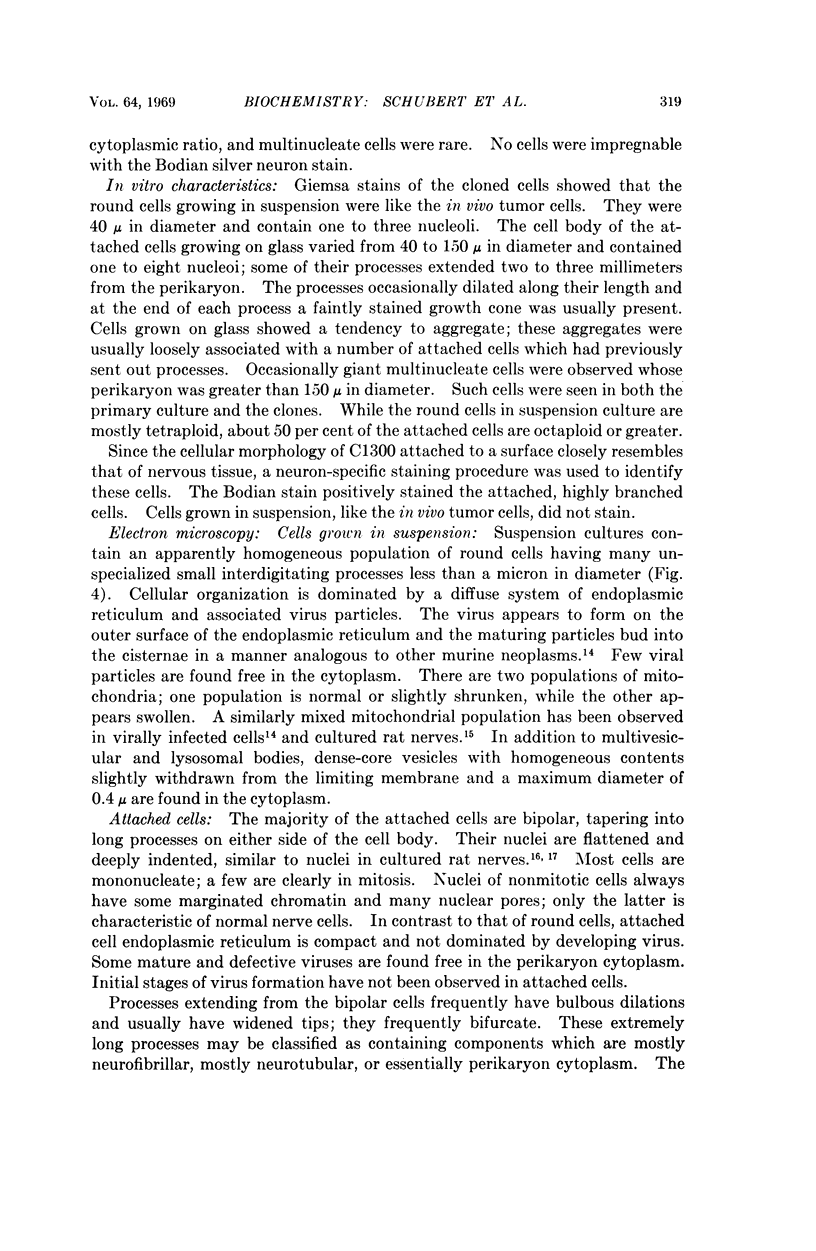
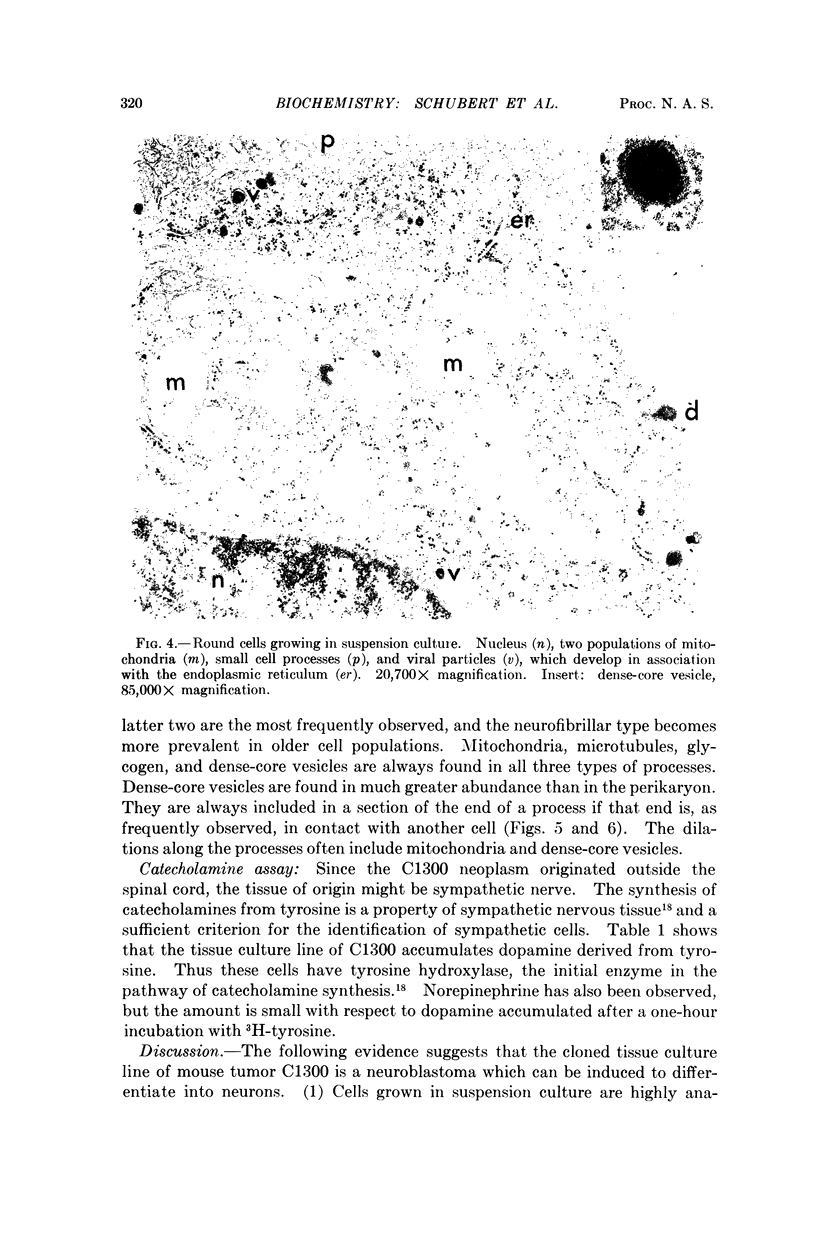
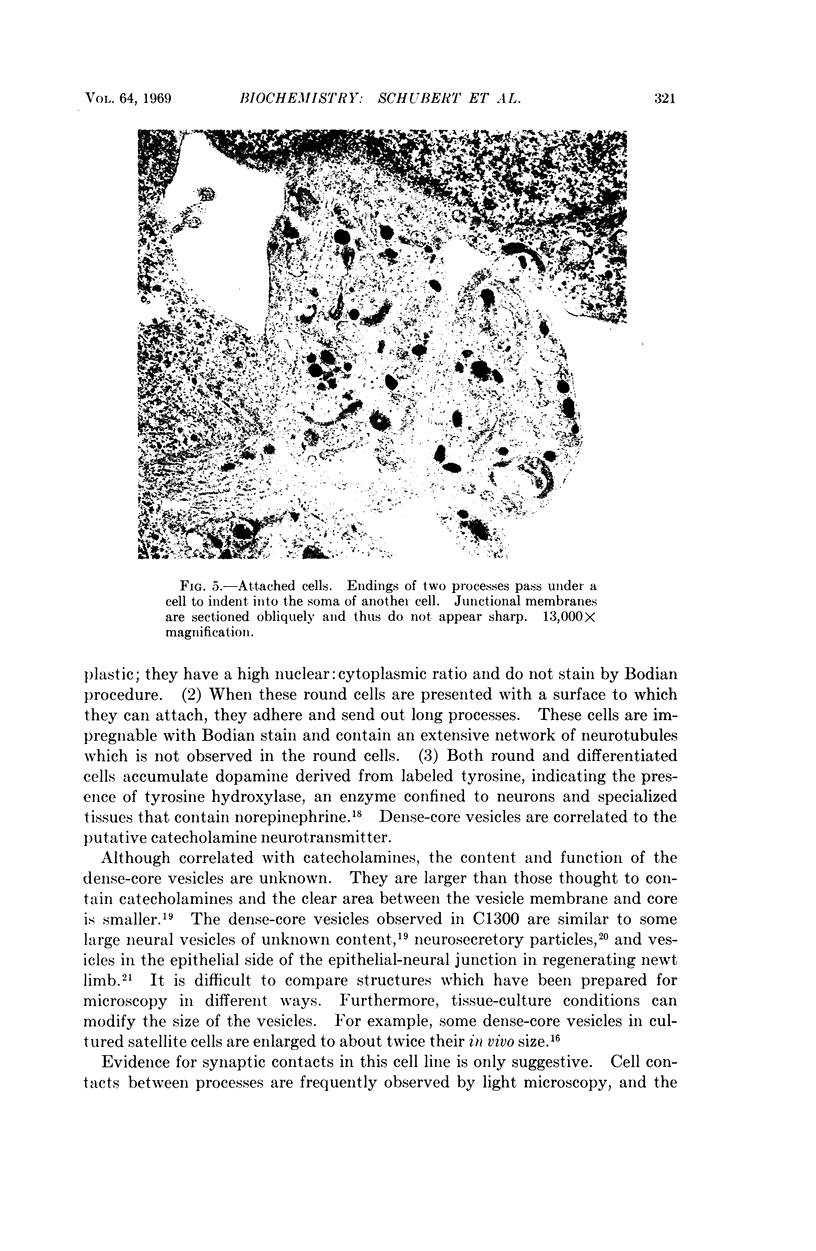
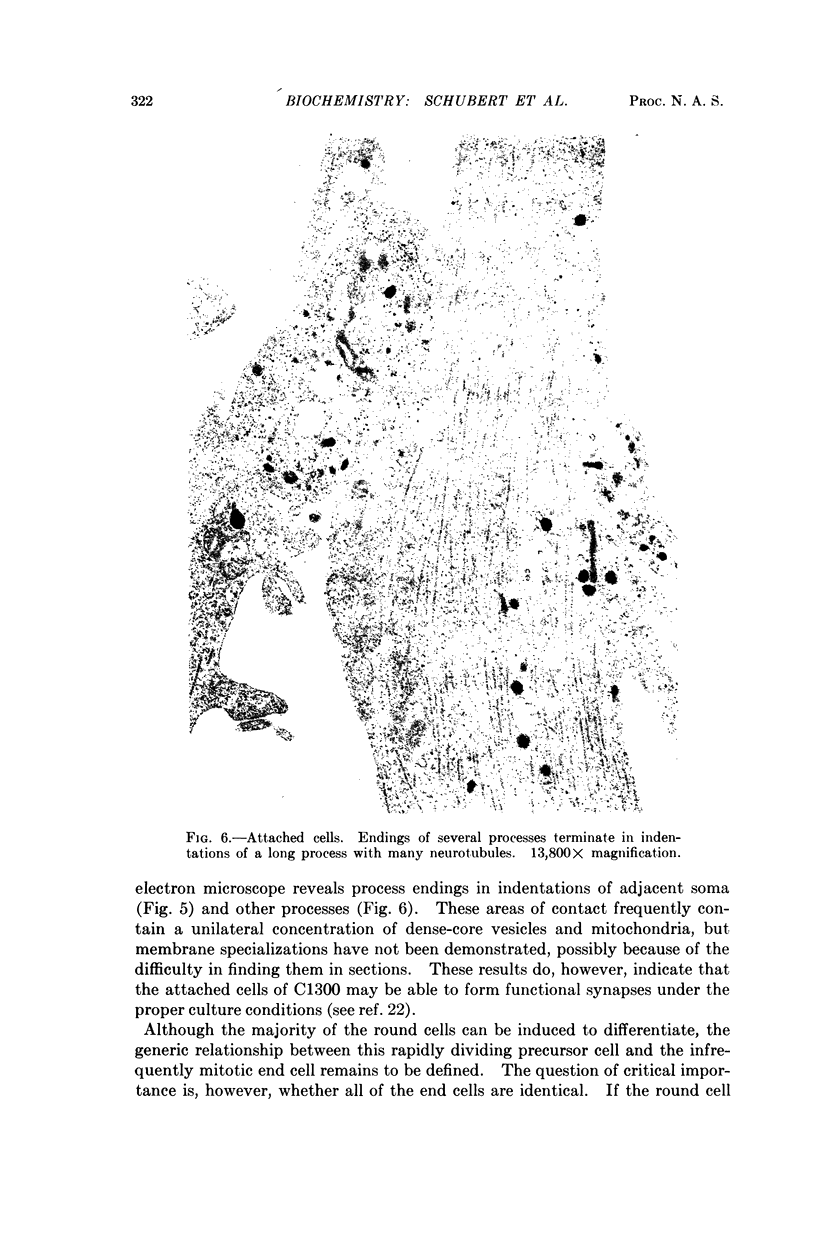
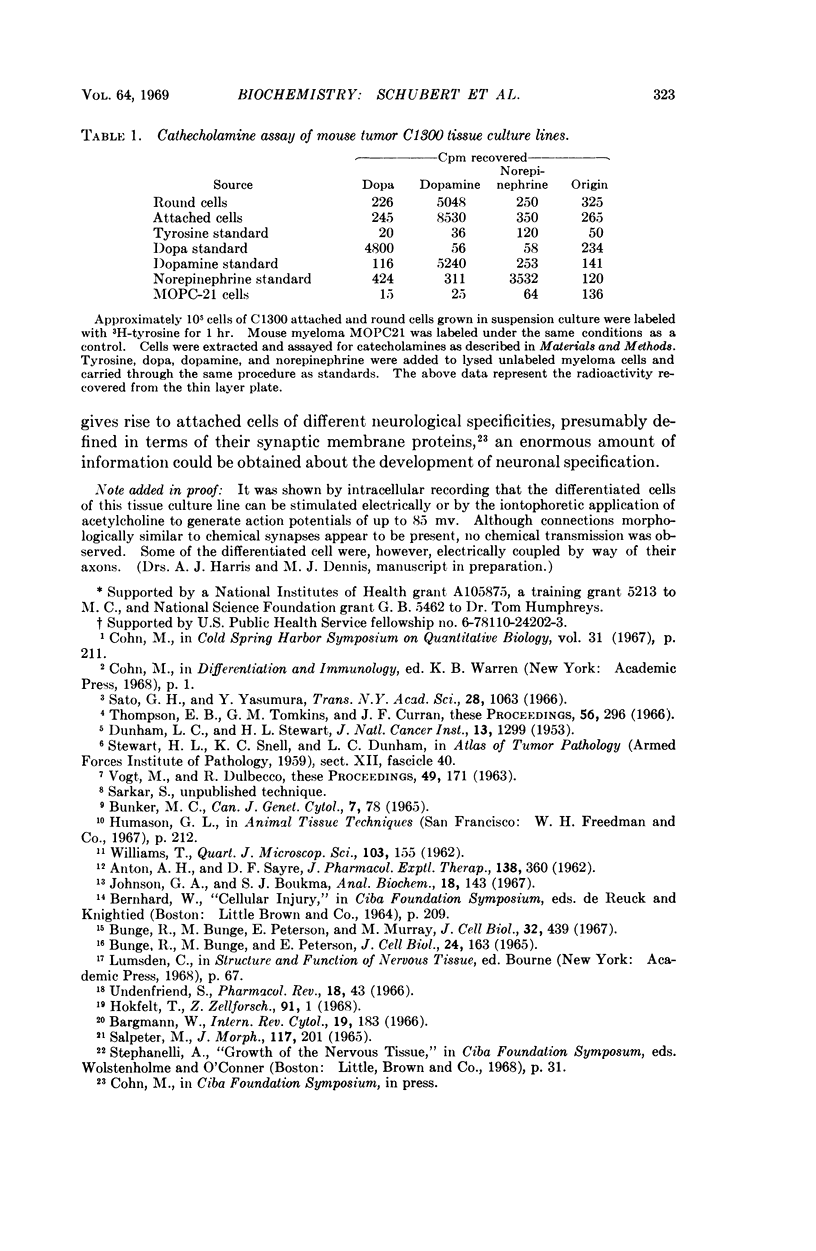
Images in this article
Selected References
These references are in PubMed. This may not be the complete list of references from this article.
- ANTON A. H., SAYRE D. F. A study of the factors affecting the aluminum oxide-trihydroxyindole procedure for the analysis of catecholamines. J Pharmacol Exp Ther. 1962 Dec;138:360–375. [PubMed] [Google Scholar]
- BUNGE R. P., BUNGE M. B., PETERSON E. R. AN ELECTRON MICROSCOPE STUDY OF CULTURED RAT SPINAL CORD. J Cell Biol. 1965 Feb;24:163–191. doi: 10.1083/jcb.24.2.163. [DOI] [PMC free article] [PubMed] [Google Scholar]
- BUNKER M. C. CHROMOSOME PREPARATIONS FROM SOLID TUMORS OF THE MOUSE: A DIRECT METHOD. Can J Genet Cytol. 1965 Mar;7:78–83. doi: 10.1139/g65-011. [DOI] [PubMed] [Google Scholar]
- Bargmann W. Neurosecretion. Int Rev Cytol. 1966;19:183–201. doi: 10.1016/s0074-7696(08)60567-7. [DOI] [PubMed] [Google Scholar]
- Bunge M. B., Bunge R. P., Peterson E. R., Murray M. R. A light and electron microscope study of long-term organized cultures of rat dorsal root ganglia. J Cell Biol. 1967 Feb;32(2):439–466. doi: 10.1083/jcb.32.2.439. [DOI] [PMC free article] [PubMed] [Google Scholar]
- DUNHAM L. J., STEWART H. L. A survey of transplantable and transmissible animal tumors. J Natl Cancer Inst. 1953 Apr;13(5):1299–1377. [PubMed] [Google Scholar]
- Hökfelt T. In vitro studies on central and peripheral monoamine neurons at the ultrastructural level. Z Zellforsch Mikrosk Anat. 1968;91(1):1–74. doi: 10.1007/BF00336984. [DOI] [PubMed] [Google Scholar]
- Salpeter M. M. Disposition of nerve fibers in the regenerating limb of the adult newt, Triturus. J Morphol. 1965 Sep;117(2):201–211. doi: 10.1002/jmor.1051170206. [DOI] [PubMed] [Google Scholar]
- Sato G. H., Yasumura Y. Retention of differentiated function in dispersed cell culture. Trans N Y Acad Sci. 1966 Jun;28(8):1063–1079. doi: 10.1111/j.2164-0947.1966.tb02408.x. [DOI] [PubMed] [Google Scholar]
- Thompson E. B., Tomkins G. M., Curran J. F. Induction of tyrosine alpha-ketoglutarate transaminase by steroid hormones in a newly established tissue culture cell line. Proc Natl Acad Sci U S A. 1966 Jul;56(1):296–303. doi: 10.1073/pnas.56.1.296. [DOI] [PMC free article] [PubMed] [Google Scholar]
- Udenfriend S. Tyrosine hydroxylase. Pharmacol Rev. 1966 Mar;18(1):43–51. [PubMed] [Google Scholar]
- VOGT M., DULBECCO R. Steps in the neoplastic transformation of hamster embryo cells by polyoma virus. Proc Natl Acad Sci U S A. 1963 Feb 15;49:171–179. doi: 10.1073/pnas.49.2.171. [DOI] [PMC free article] [PubMed] [Google Scholar]



